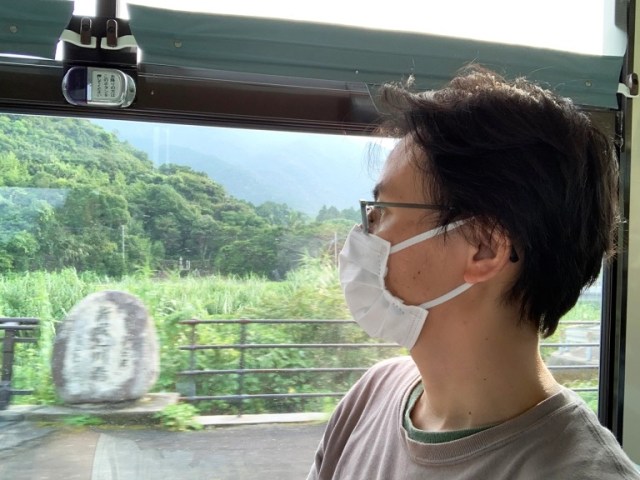
Winging it may not have been the best choice for Seiji’s trip to the Princess Mononoke island.
The best part of travelling is the unexpected adventures and discoveries that you weren’t expecting. At least that’s our Japanese-language reporter Seiji Nakazawa’s philosophy, which is why he tries to plan out as little as possible on is trips around Japan.
So for his trip to Yakushima, the heavily forested island in southwest Japan that’s said to have inspired the lush scenery of Studio Ghibli anime Princess Mononoke, pretty much all Seiji did was book a place to stay and check the timetable for getting to the island. Aside from that, his “plan” pretty much consisted of showing up at Yakushima and seeing what would happen.
From the rest of Japan, you’ve got two options for getting to Yakushima: plane or boat. Flying into the island’s airport, though, is not at all cheap. Even with Seiji’s trip coming after the peak Obon summer holiday period, one-way flights from Tokyo to Yakushima were still priced at about 80,000 yen (US$595), pretty much the same as an international flight.
The more cost-effective choice is to make your way to the port in Kagoshima City on Kyushu, the southwesternmost of Japan’s four main islands, and take a high-speed ferry from there. Seiji’s flight from Tokyo to Kagoshima cost him 13,000 yen and the ferry was another 16,000, saving him about 50,000 yen one-way.
After getting off the plane, Seiji took the train to the closest station to the port, Kagoshima-chuo, where he hopped a taxi to the ferry terminal (which took about 10 minutes and 1,340 yen). It was a Sunday, and there were only two boats that day heading to Yakushima. The 4 p.m. departure had filled up with reservations the day before, but Seiji was able to get a ticket on the earlier ship, which was leaving at 1:20 in the afternoon.
▼ The lines at the ticket counters can get pretty long, so Seiji recommends showing up 30 to 40 minutes before your departure.
The ship left the docks right away, and Seiji was able to enjoy the summer sunshine and the ocean views along the way to Miyanoura Port, on the north side of the island.
▼ Miyanoura Port, marked by the red arrow
Once they’d docked, Seiji set foot onto Yakushima, and this is where his plan ended, aside from the fact that he knew he’d be staying in the lodge he’d booked a room at on the south side of the island. But like we said, Seiji is a veteran of playing it by ear when traveling, and so he nonchalantly sauntered over to the taxi stand to hail a cab.
There weren’t any taxis there right at the moment, but no problem, he could wait. So he waited. And waited…and waited, but not a single cab showed up.
This wasn’t anything a simple phone call couldn’t fix, though, so Seiji dialed the number for the local taxi operator and asked for them to send a car. Unfortunately for our overconfident reporter, they told him that every single one of their drivers was already driving a fare somewhere else around the island, and so they didn’t know when they’d be able to send one to pick him up.
So Seiji started considering his other options. There was a car rental agency, but remember, his lodge was all the way on the other side of the island, and he was staying for a week. The hassle of renting a car to get to his accommodation, only to have to return it to the north side and find another way back the next day, didn’t appeal to him, nor did the expense of keeping the rental for an entire week.
There’s also a bus stop near the port, but by this point Seiji had missed the bus, and there wouldn’t be another coming along for an hour.
Starting to feel like he’d gotten stuck in a role-playing video game, Seiji felt a surge of hopeful optimism when he noticed the Tourist Information Center building. Surely they’d be able to tell him the best way to get across the island, right?
Unfortunately, there was no one staffing the center that day.
While all this was happening, Seiji became aware of another problem: he was hungry. He figured he’d grab a bite to eat while trying to figure out how to get out of his predicament, only to find out that since it was late enough in the afternoon that almost all of the restaurants in the area had stopped serving lunch and were closed until dinnertime.
Luckily, a clerk at the port’s souvenir shop was able to give Seiji directions to Kitchen Hub, pretty much the only restaurant within walking distance still serving lunch at that time. Seiji was able to fill himself up with curry there, and on the way he spotted the local police box
After eating. Seiji popped into the police box to ask the officers for help. They listened kindly and patiently as he explained that he’d come all the way from Tokyo and needed to get to the other side of the island, then they told him “You’re gonna have to take the bus.”
So it was back to the bus stop to wait, though the officers were nice enough to show Seiji on a map where the closest stop to his lodge was going to be.
So in hindsight, as much fun as it can be to travel with only the bare minimum of a plan, a little more prep work would have been a good idea. That actually holds true for trips to other rural parts of Japan too, since while the country is rightfully famous for the high quality of its public transportation systems, service gets increasingly infrequent the farther into the countryside you’re venturing.
Thankfully, Seiji was eventually able to get to his lodge, so all-in-all this was a more successful expedition than what happened when he tried to go to “Laputa Island.”
We’re still keeping our fingers crossed that he’ll be able to make it back to Tokyo, though.
Photos © SoraNews24
● Want to hear about SoraNews24’s latest articles as soon as they’re published? Follow us on Facebook and Twitter!
[ Read in Japanese ]

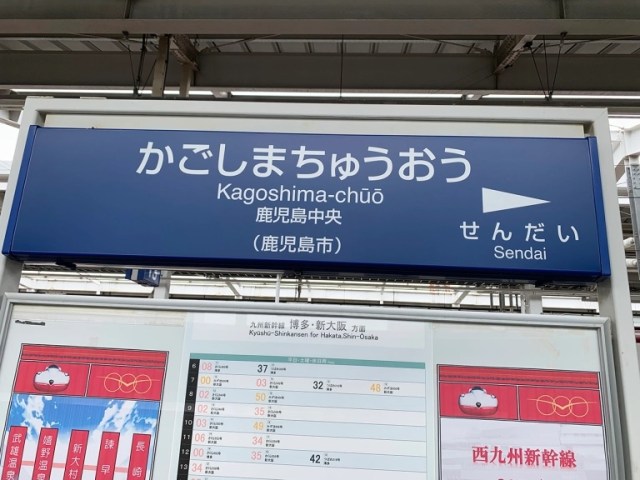
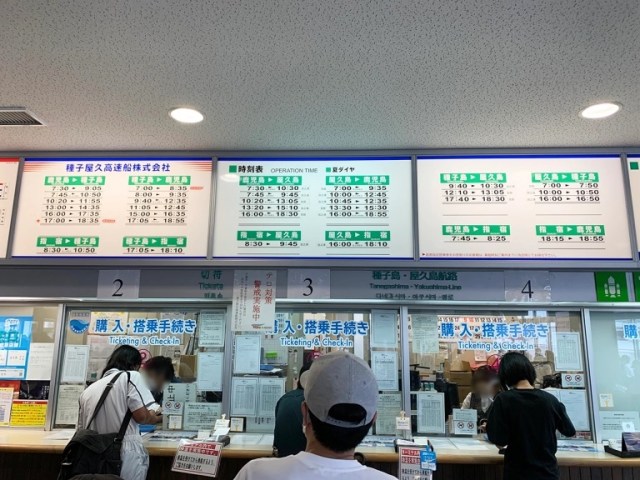
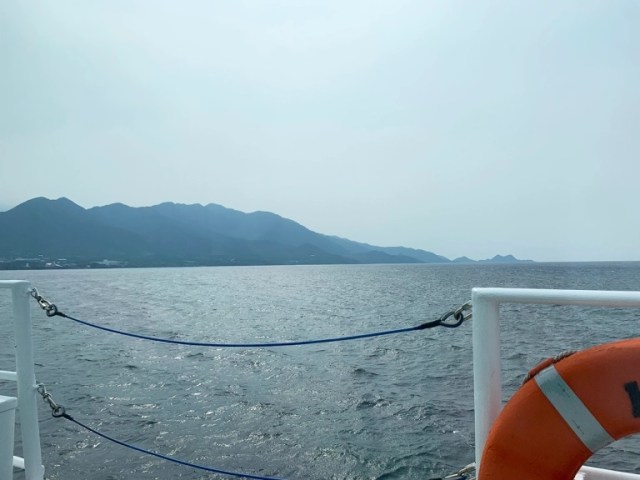
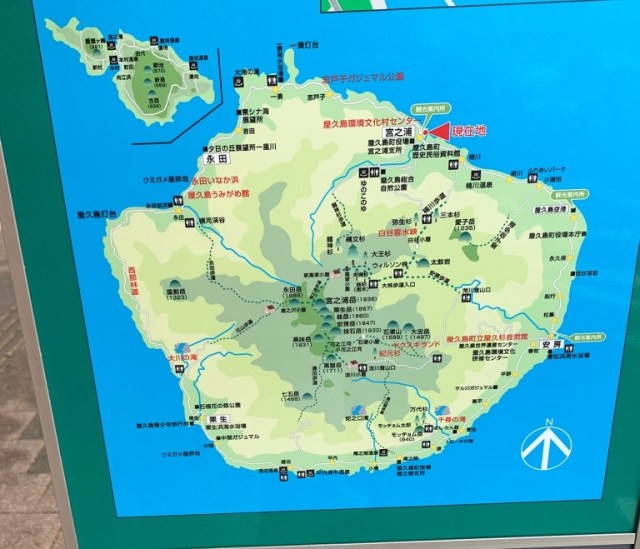
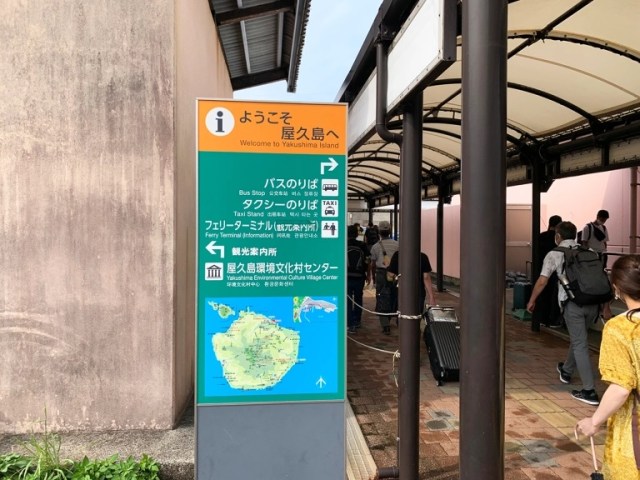
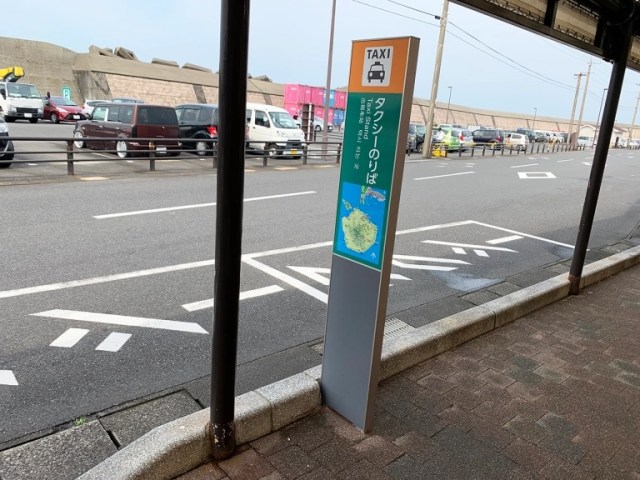
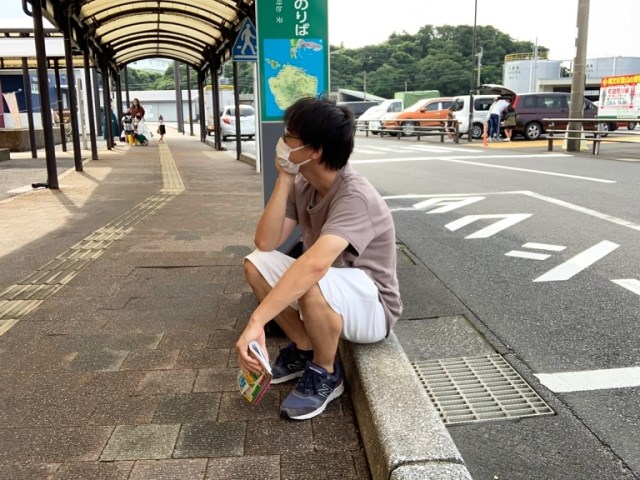
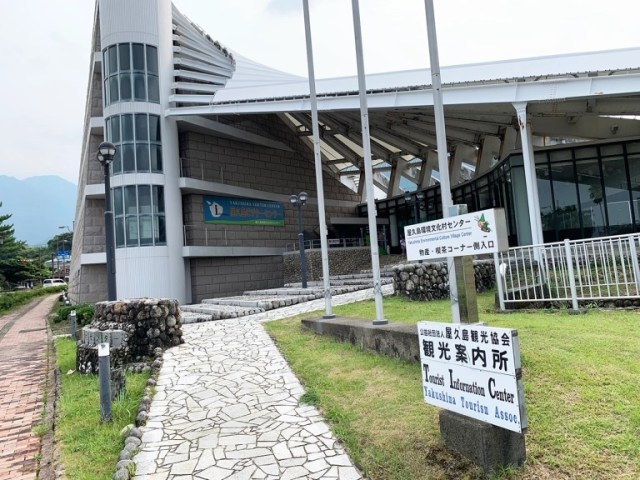
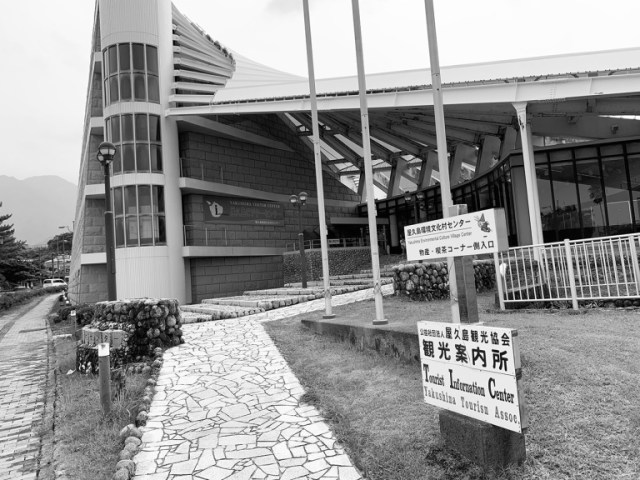
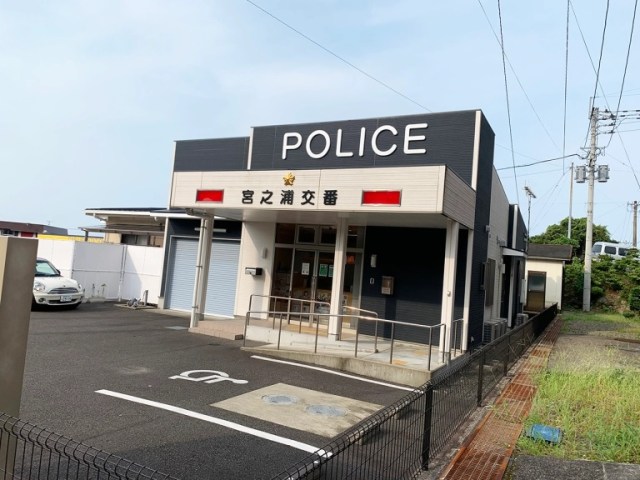
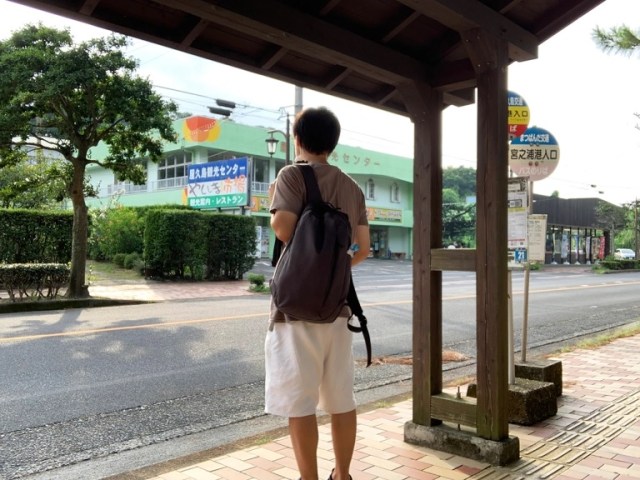
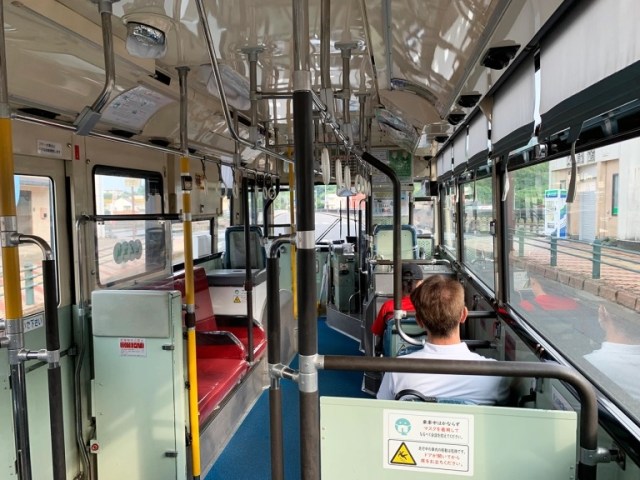
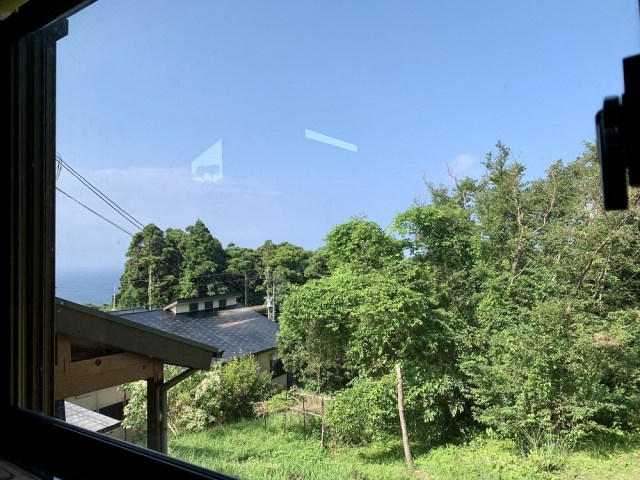

 No car? No problem! We find photogenic hidden gems in Yakushima that are easy to get to
No car? No problem! We find photogenic hidden gems in Yakushima that are easy to get to Shiratani Unsuikyo: The breathtaking anime setting where Princess Mononoke was born
Shiratani Unsuikyo: The breathtaking anime setting where Princess Mononoke was born “Hey, Japanese taxi driver, take us to the best seafood joint in Otaru!”
“Hey, Japanese taxi driver, take us to the best seafood joint in Otaru!” Amazon Japan are selling Uber Eats backpacks and they’re surprisingly useful
Amazon Japan are selling Uber Eats backpacks and they’re surprisingly useful “Hey, how’d you get our personal information?” we ask a Japanese telemarketer
“Hey, how’d you get our personal information?” we ask a Japanese telemarketer McDonald’s new Happy Meals offer up cute and practical Sanrio lifestyle goods
McDonald’s new Happy Meals offer up cute and practical Sanrio lifestyle goods All-you-can-drink Starbucks and amazing views part of Tokyo’s new 170 meter-high sky lounge
All-you-can-drink Starbucks and amazing views part of Tokyo’s new 170 meter-high sky lounge Super Nintendo World expansion gets delayed for several months at Universal Studios Japan
Super Nintendo World expansion gets delayed for several months at Universal Studios Japan Studio Ghibli glasses cases let anime characters keep an eye on your spectacles
Studio Ghibli glasses cases let anime characters keep an eye on your spectacles Studio Ghibli releases new action figures featuring Nausicaä of the Valley of the Wind characters
Studio Ghibli releases new action figures featuring Nausicaä of the Valley of the Wind characters Kyoto’s 100 Demons yokai monster parade returns!
Kyoto’s 100 Demons yokai monster parade returns! We try out “Chan Ramen”, an underground type of ramen popular in the ramen community
We try out “Chan Ramen”, an underground type of ramen popular in the ramen community Japanese sangria is the most refreshing drink you’ll have all week【Recipe】
Japanese sangria is the most refreshing drink you’ll have all week【Recipe】 We put the internet’s “techniques for emptying your bladder with morning wood” to the test
We put the internet’s “techniques for emptying your bladder with morning wood” to the test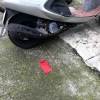 Find a red envelope on the ground? Here’s why you should never pick it up
Find a red envelope on the ground? Here’s why you should never pick it up More foreign tourists than ever before in history visited Japan last month
More foreign tourists than ever before in history visited Japan last month Disney princesses get official manga makeovers for Manga Princess Cafe opening in Tokyo
Disney princesses get official manga makeovers for Manga Princess Cafe opening in Tokyo Starbucks reopens at Shibuya Scramble Crossing with new look and design concept
Starbucks reopens at Shibuya Scramble Crossing with new look and design concept Beautiful new Final Fantasy T-shirt collection on the way from Uniqlo【Photos】
Beautiful new Final Fantasy T-shirt collection on the way from Uniqlo【Photos】 Is the new Shinkansen Train Desk ticket worth it?
Is the new Shinkansen Train Desk ticket worth it? Foreign English teachers in Japan pick their favorite Japanese-language phrases【Survey】
Foreign English teachers in Japan pick their favorite Japanese-language phrases【Survey】 Beautiful Sailor Moon manhole cover coasters being given out for free by Tokyo tourist center
Beautiful Sailor Moon manhole cover coasters being given out for free by Tokyo tourist center Studio Ghibli releases Kiki’s Delivery Service chocolate cake pouches in Japan
Studio Ghibli releases Kiki’s Delivery Service chocolate cake pouches in Japan Japan’s bone-breaking and record-breaking roller coaster is permanently shutting down
Japan’s bone-breaking and record-breaking roller coaster is permanently shutting down New definition of “Japanese whiskey” goes into effect to prevent fakes from fooling overseas buyers
New definition of “Japanese whiskey” goes into effect to prevent fakes from fooling overseas buyers Our Japanese reporter visits Costco in the U.S., finds super American and very Japanese things
Our Japanese reporter visits Costco in the U.S., finds super American and very Japanese things Studio Ghibli unveils Mother’s Day gift set that captures the love in My Neighbour Totoro
Studio Ghibli unveils Mother’s Day gift set that captures the love in My Neighbour Totoro Domino’s Japan now sells…pizza ears?
Domino’s Japan now sells…pizza ears? New Japanese KitKat flavour stars Sanrio characters, including Hello Kitty
New Japanese KitKat flavour stars Sanrio characters, including Hello Kitty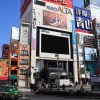 One of Tokyo’s most famous meeting-spot landmarks is closing for good
One of Tokyo’s most famous meeting-spot landmarks is closing for good Kyoto creates new for-tourist buses to address overtourism with higher prices, faster rides
Kyoto creates new for-tourist buses to address overtourism with higher prices, faster rides Sales of Japan’s most convenient train ticket/shopping payment cards suspended indefinitely
Sales of Japan’s most convenient train ticket/shopping payment cards suspended indefinitely Sold-out Studio Ghibli desktop humidifiers are back so Totoro can help you through the dry season
Sold-out Studio Ghibli desktop humidifiers are back so Totoro can help you through the dry season Japanese government to make first change to romanization spelling rules since the 1950s
Japanese government to make first change to romanization spelling rules since the 1950s Ghibli founders Toshio Suzuki and Hayao Miyazaki contribute to Japanese whisky Totoro label design
Ghibli founders Toshio Suzuki and Hayao Miyazaki contribute to Japanese whisky Totoro label design Doraemon found buried at sea as scene from 1993 anime becomes real life【Photos】
Doraemon found buried at sea as scene from 1993 anime becomes real life【Photos】 Tokyo’s most famous Starbucks is closed
Tokyo’s most famous Starbucks is closed One Piece characters’ nationalities revealed, but fans have mixed opinions
One Piece characters’ nationalities revealed, but fans have mixed opinions We asked a Uniqlo employee what four things we should buy and their suggestions didn’t disappoint
We asked a Uniqlo employee what four things we should buy and their suggestions didn’t disappoint Princesses, fruits, and blacksmiths: Study reveals the 30 most unusual family names in Japan
Princesses, fruits, and blacksmiths: Study reveals the 30 most unusual family names in Japan “Hey, Japanese taxi driver, take us to the best Sapporo ramen place!” – Things don’t go as planned
“Hey, Japanese taxi driver, take us to the best Sapporo ramen place!” – Things don’t go as planned We attend one of Japan’s most important press conferences this year, dressed as Vegeta【Photos】
We attend one of Japan’s most important press conferences this year, dressed as Vegeta【Photos】 These Pakistani students in Tokyo had never been to the beach, and that’s something we had to fix
These Pakistani students in Tokyo had never been to the beach, and that’s something we had to fix The best soba restaurant on Yakushima island, according to locals
The best soba restaurant on Yakushima island, according to locals Noodle joint in Harajuku becomes a hot topic with foreigners on Reddit, but is it any good?
Noodle joint in Harajuku becomes a hot topic with foreigners on Reddit, but is it any good? Resol Poshtel: Cheap capsule hotel in Tokyo is a hit with overseas visitors, and we find out why
Resol Poshtel: Cheap capsule hotel in Tokyo is a hit with overseas visitors, and we find out why Non-Whisper of the Heart Seiji’s 60x-zoom sneak peek of the real-world Earth Shop at Ghibli Park
Non-Whisper of the Heart Seiji’s 60x-zoom sneak peek of the real-world Earth Shop at Ghibli Park We turn into paranormal investigators, check out the “world’s scariest” haunted spot in the U.K.
We turn into paranormal investigators, check out the “world’s scariest” haunted spot in the U.K. A Gintama fan’s emotional 19-year journey to buy a proper Lake Toya bokuto wooden katana【Pics】
A Gintama fan’s emotional 19-year journey to buy a proper Lake Toya bokuto wooden katana【Pics】 The SoraNews24 secret technique for staying warm in your office this winter【Experiment】
The SoraNews24 secret technique for staying warm in your office this winter【Experiment】 Takoyaki store in Osaka becomes a hot topic on Reddit, but is it any good?
Takoyaki store in Osaka becomes a hot topic on Reddit, but is it any good? Eating a shark heart from a Tokyo supermarket【Photos】
Eating a shark heart from a Tokyo supermarket【Photos】 How do you beat Bic Camera’s Lucky Box lines, and what’s inside their Sim-Free Phone box?
How do you beat Bic Camera’s Lucky Box lines, and what’s inside their Sim-Free Phone box? Japan’s cat robot waiters meow when you pat them, and we find out why【Video】
Japan’s cat robot waiters meow when you pat them, and we find out why【Video】 7 new winter 2022 anime (besides Attack on Titan and Demon Slayer) our otaku reporter recommends
7 new winter 2022 anime (besides Attack on Titan and Demon Slayer) our otaku reporter recommends Is it okay to bleach hair that has been surgically transplanted? Seiji reports on his hairline
Is it okay to bleach hair that has been surgically transplanted? Seiji reports on his hairline
Leave a Reply